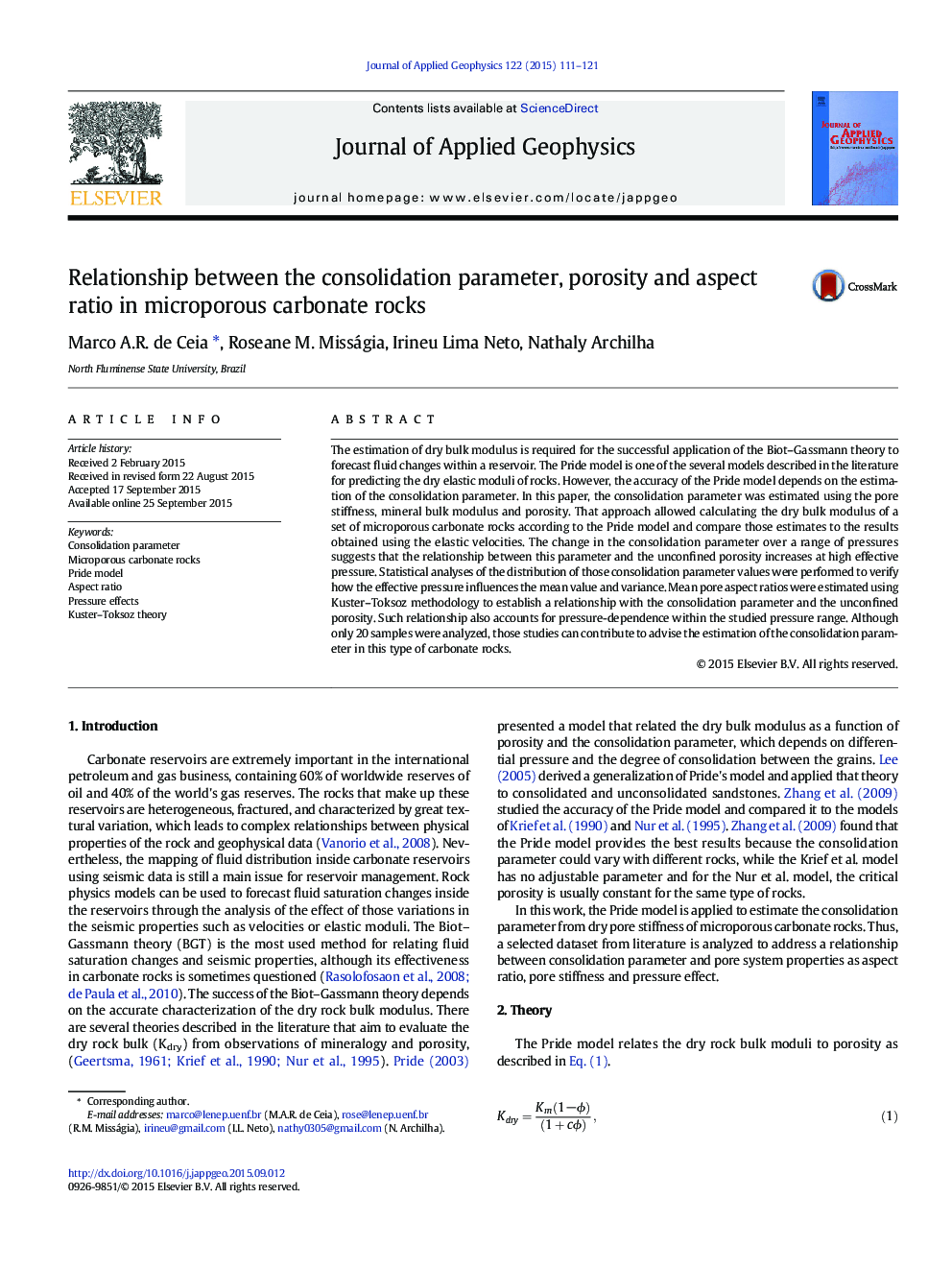| Article ID | Journal | Published Year | Pages | File Type |
|---|---|---|---|---|
| 6447102 | Journal of Applied Geophysics | 2015 | 11 Pages |
Abstract
The estimation of dry bulk modulus is required for the successful application of the Biot-Gassmann theory to forecast fluid changes within a reservoir. The Pride model is one of the several models described in the literature for predicting the dry elastic moduli of rocks. However, the accuracy of the Pride model depends on the estimation of the consolidation parameter. In this paper, the consolidation parameter was estimated using the pore stiffness, mineral bulk modulus and porosity. That approach allowed calculating the dry bulk modulus of a set of microporous carbonate rocks according to the Pride model and compare those estimates to the results obtained using the elastic velocities. The change in the consolidation parameter over a range of pressures suggests that the relationship between this parameter and the unconfined porosity increases at high effective pressure. Statistical analyses of the distribution of those consolidation parameter values were performed to verify how the effective pressure influences the mean value and variance. Mean pore aspect ratios were estimated using Kuster-Toksoz methodology to establish a relationship with the consolidation parameter and the unconfined porosity. Such relationship also accounts for pressure-dependence within the studied pressure range. Although only 20 samples were analyzed, those studies can contribute to advise the estimation of the consolidation parameter in this type of carbonate rocks.
Keywords
Related Topics
Physical Sciences and Engineering
Earth and Planetary Sciences
Geophysics
Authors
Marco A.R. de Ceia, Roseane M. Misságia, Irineu Lima Neto, Nathaly Archilha,
